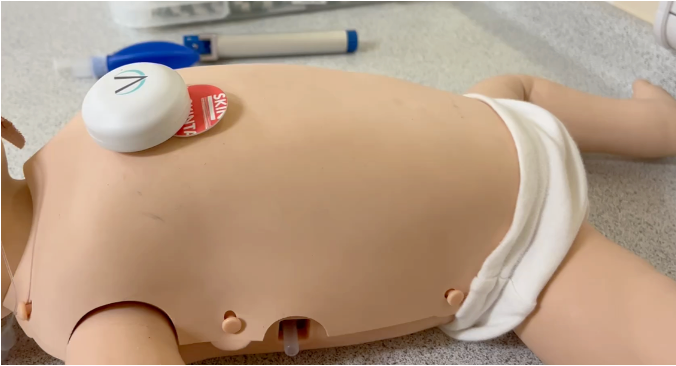Put another record on
- 24 December 2014

“It’s been an unmitigated success.” It’s a confident way in which to describe an IT project, but Gary Loughran says he has no hesitation in applying it to the Northern Ireland Electronic Care Record.
And that’s despite what he says about his countrymen’s reluctance to be seen to be boasting about their own achievements.
Facts and figures
The NIECR is a care record used across Northern Ireland. It has more than 15,000 users – 10,000 of which are classed as ‘active’, meaning they access the system at least one a week.
Together, those users consume three quarters of a million pieces of information weekly. The breadth of that information is impressive, encompassing information from eight patient administration systems, the same number of clinical document systems, ten emergency department systems, five out-of-hours providers, six laboratory systems, three radiology systems and 350 GP systems.
The result: every healthcare professional in Northern Ireland has the same basic information about a patient, drawn from across organisational, IT and sector boundaries.
“As a clinician, I have to say it’s been fantastic,” enthuses Dr Roy Harper, a consultant physician and endocrinologist at South Eastern Trust and one of the system’s clinical champions. “Just having all of that information in one place really is awesome.”
How did they do that?
The judges at this year’s EHI Awards agreed, naming the project the winner in the integration category. If few would deny the scale of the achievement, many would ask a simple question: how? How has it been possible to so comprehensively implement a shared care record?
The question is particularly pointed, given that England’s Summary Care Record has only just got to 40m records, almost a decade after launch, and the care.data project is still languishing in no man’s land, having run into the same issues as the SCR over consent and use.
Yet the latest plans for making the NHS more efficient, as set out in the ‘Five Year Forward View’ and the planning guidance for 2015-16 that came out this week, depend on both creating and using integrated records in sophisticated new ways.
Loughran, who is Northern Ireland’s eHealth programme manager, says a large part of the success came from starting small. “We didn’t explode out and rip and replace,” he says. “We started with a pilot portal, and we worked to build the proof of concept with that.
“So we went through the teething problems under the radar as it were. For the first six months we had 200 users, and then we got it to a level of stability and accuracy that we were really able to ramp up users.
“By December 2010, when we closed the pilot and evaluation, we had 1,000 users. That evaluation gave us the backbone of our business case, which we were able to build with real information.”
Start small, build understanding
The business case secured investment to expand the system across Northern Ireland’s health and social care services. Following a July 2013 launch, all healthcare professions now have access to the record.
“There’s nobody not using it,” emphasises Loughran. “Pharmacists, receptionists, social workers, allied health professionals, psychologists, nurses, dentists, midwives all use the system.”
Despite the enormous growth of the project, the central team steering it remains relatively small. In part that’s because of the very specific skills deemed necessary to be a member. The desire is for individuals who can understand the perspectives of others in what is a multidisciplinary group – commissioning, IT and clinicians are all represented.
“We call them hybrid professionals,” explains Harper. “So we’ve got IT guys now who can see right into the clinical world and what it’s like to be on the frontline and why it’s important to have good information, and what happens if things don’t work out.
“And what we’ve also got is clinicians who understand what is actually possible, and what the timeframes are, and how it has to be done right, and the importance of information security. It really is a tiny bunch of people [working on the project] but I think we work well together because we understand each others’ worlds better now.”
Loughran agrees. “I don’t think we can any longer plonk down a system and say: ‘IT thought this was the best clinical device for you.’ I think IT has to learn the language of the clinician, who now in terms of how IT gets used is as savvy as anyone in IT generally.
“So I think the lines are getting blurred in clinical informatics and IT. I’m trying to teach all my team a hybrid role: understanding the service, understanding IT, and understanding general project management principles which underpin our interfaces and integration.
“The idea of a hybrid professional is a key success factor for the project, but it’s also a key challenge to maintain because we’ve probably gone way beyond our expectations of where we would be with the system today. We’ve almost been victims of our own success in that it’s challenging for the team to meet all the demand.”
Then ramp up – and get patients involved
Which is not to stay they are halting plans for expansion. Electronic referrals from general practice have recently been added to the system, there are plans to introduce radiology ordering within the next six months (“that changes the game again,” says Loughran), and the team is exploring building in further information to support chronic disease management.
All such ideas are backed by those actually using the system: the idea throughout has been a system developed by clinicians for clinicians. But there is also enthusiasm from patients.
Yes, says Loughran, there was a lot of initial work to explain the benefits to the public. “They key people, the core group, were constantly getting the message out – doing demonstrations, doing presentations, involving the patient council at the right time, making sure patient advocates were on board with what we were doing.
“But what we found, and I mean this, is that the patient view wasn’t: ‘Oh, don’t show that information’, it was: ‘Why aren’t you showing that already?’”
Again, his view is supported by the figures. Only 70 people out of the 1.8 million living in Northern Ireland have opted to have their electronic care record ‘locked’. Harper says patients now simply expect the record to be used when they see a healthcare professional.
“Well over a quarter of our population have seen the ECR in action to support their own care,” he explains. “Everybody now expects it to opened when they have a clinical interaction.
“And I think when you ask patients about it – we have to formally ask can we open the record to support your care – they sort of glaze over and say: ‘What? What are you asking me that for; I thought you had all of that information, Dr Harper.’
“I’ve never had a patient who said no, and I can’t think of any of my colleagues who have. They’re only too ready for it to be opened, because they know it brings value.”




